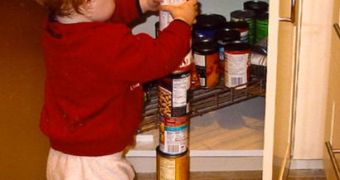Experts at the LENA Foundation have recently announced the development of a new device that can spot autism at a very early age. According to their press release, the machine is able to detect the disease in children as small as two years old, which is a progress from the 5.7 years usual methods take. It relies on identifying specific patterns in the vocalizations the small ones make at home, and does not require medical attention per se. The results will be available within a few weeks, as soon as sufficient data is collected, Technology Review informs.
University of Washington in St. Louis experts have determined that the 5.7 years it takes on average for one to spot autism is a time frame several years longer than the time when such a diagnostic can first be made. “Intervention is most effective when the child is two to four years old,” the LENA Foundation child language research director, Jill Gilkerson, explains the advantages of the new device. She reveals that the apparatus is able to discern between infants growing up with autism, healthy children, and those with unassociated language delays with a 91-percent accuracy.
The take-home kit consists of a questionnaire on the child's development, which the parents have to fill out, an audio recording, as well as an outfit for the child to wear during the analysis. Because it's not intrusive, the device does not cause abnormal reactions in the wearer, such as it would be the case if the infant was taken to a physician's office. Using the system is very easy. In the morning, the audio receiver is placed in a small pocket on the outfit, and left on for a total of about 16 hours. After it is full, parents have to send it to the LENA Foundation, where experts analyze the data and give the verdict.
“Roughly speaking, autistic children vocalize differently from other children,” the Manager of Software and Language Engineering at the Foundation, Dongxin Xu, shares. The LENABaby software that the experts use to analyze the child's vocalizations can determine the phonological composition of each sound on the audio recorded, and also how sounds are clustered and paired. “We're simultaneously looking across many dimensions at the same time,” LENA Foundation statistician and database technician Jeffrey Richards explains.

 14 DAY TRIAL //
14 DAY TRIAL //